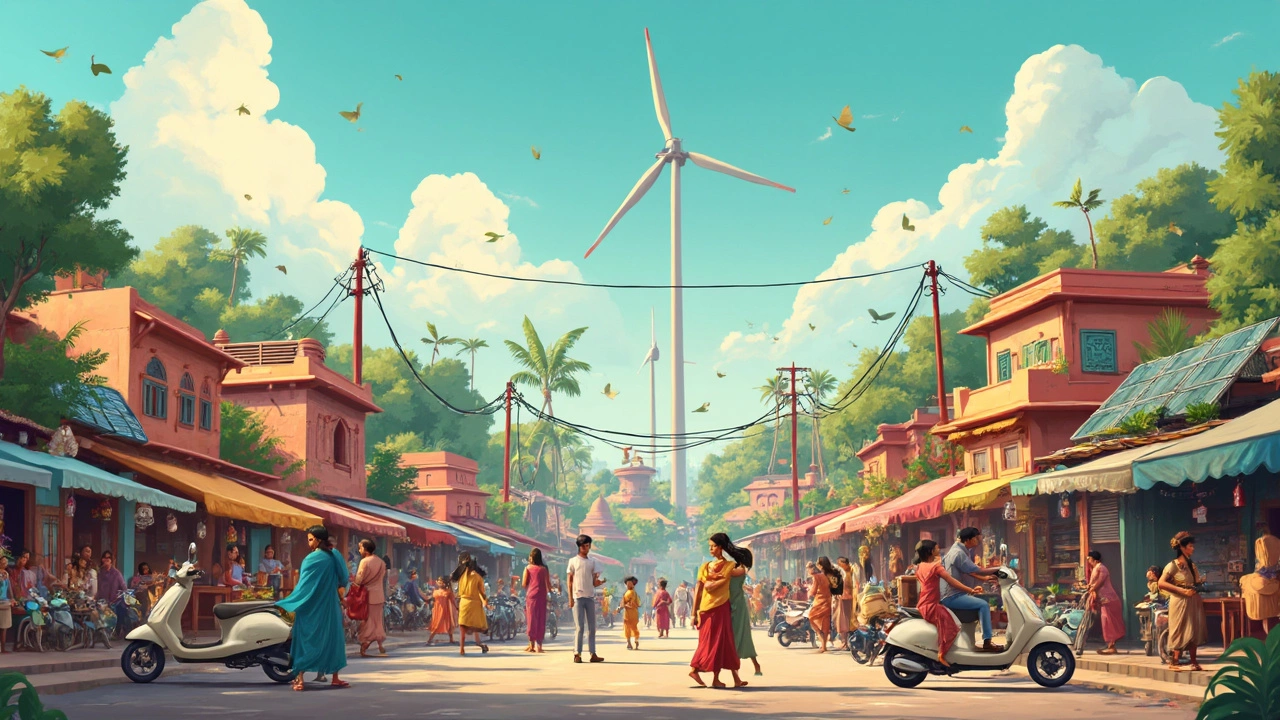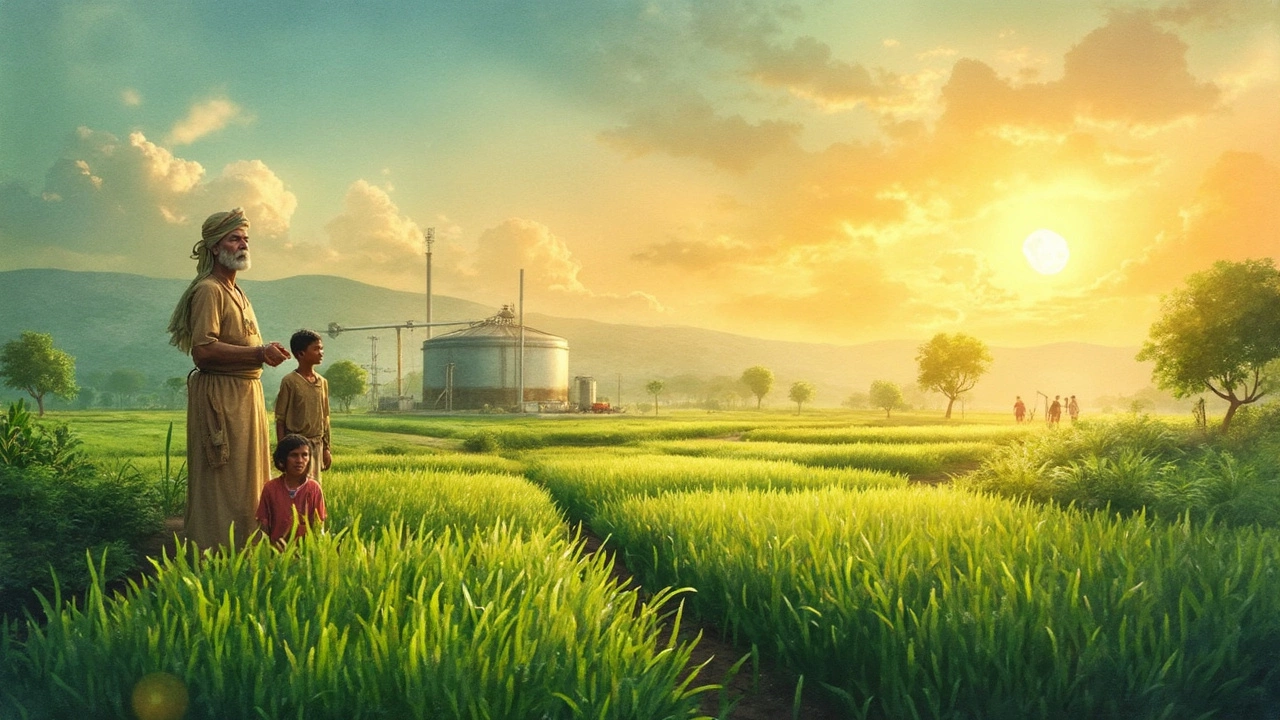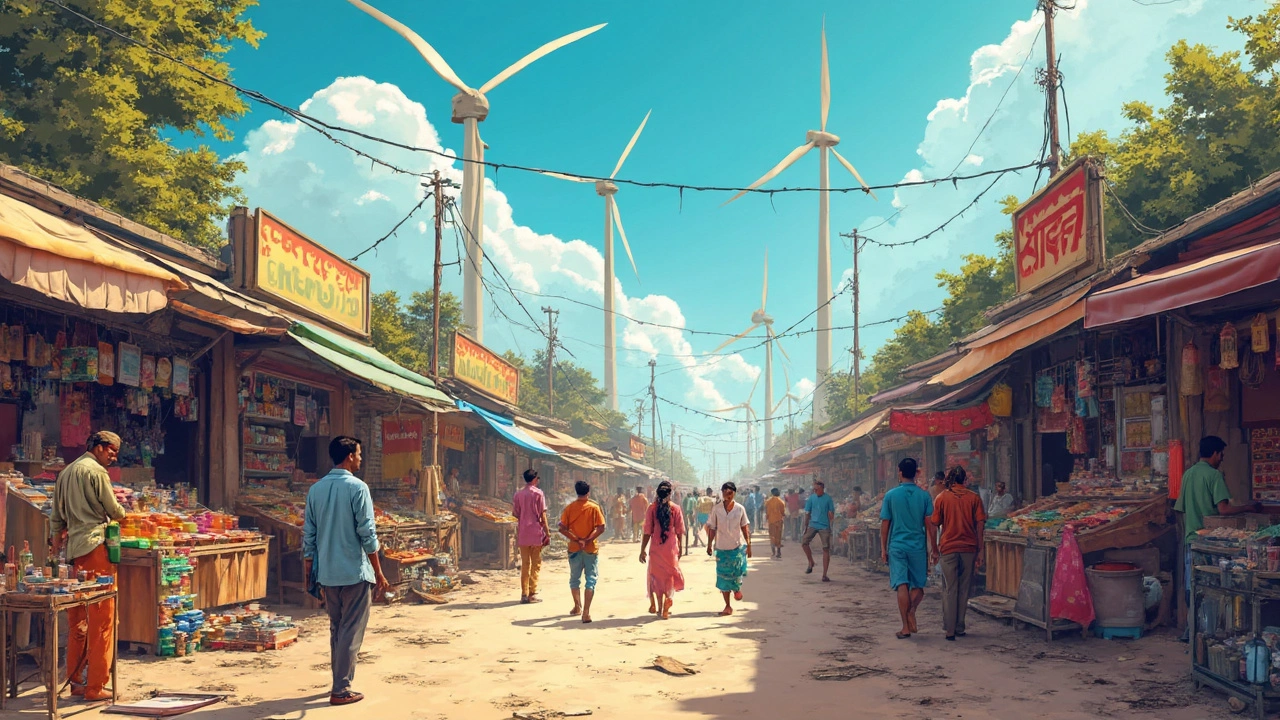Top 10 Renewable Resources Everyone Should Know About
 Mar, 18 2025
Mar, 18 2025
Renewable resources—it sounds like a buzzword, doesn't it? But these resources are more than just trendy terms. They're the backbone of sustainable living and a cleaner, greener future. Okay, so what exactly are they? Simply put, renewable resources are natural sources that can be replenished over time. The sun won't stop shining, the wind won't quit blowing, and water is always in motion. That's the beauty of renewables—they're endless!
Now, you might be wondering why they've gained so much traction. Well, apart from being environmentally friendly, they also offer a reliable energy supply that's not subject to the boom-and-bust cycle of traditional fossil fuels. It's like having an energy source that doesn’t run out. These resources reduce our carbon footprint, making the planet a better place for future generations. Who wouldn't want that?
Let's kick things off with the big player—solar energy. It's about capturing sunlight and converting it into electricity or heat. Think solar panels on rooftops soaking up rays. They're popular because they're efficient and literally right above us all the time. Interested in cutting down your power bills? Solar might just be your friend.
- Understanding Renewable Resources
- Solar Energy - Harnessing the Sun
- Wind Energy - Power of the Air
- Hydropower - Flowing Water's Might
- Biofuels and Beyond
Understanding Renewable Resources
Alright, so, renewable resources are not just science jargon. They're crucial players in the world of renewable energy. Think of them as a nature's never-ending gift—resources we can use repeatedly without the fear of running out.
What's fascinating here is the cycle of renewability. For instance, the sun rises every morning and sets every evening, no matter what. Likewise, wind patterns and flowing water are reliable forces, tirelessly working day and night. These forces are what power our green technologies, which keep us moving toward a sustainable future.
The Benefits of Renewable Resources
Why should we care about these resources? Well, they offer several benefits:
- Sustainability: They don't deplete over time, ensuring the availability of energy in the long run.
- Environment-friendly: No nasty emissions, which means less pollution and a healthier planet.
- Energy Independence: Reduces reliance on imported fuels, enhancing energy security.
Dive into numbers, and you'll find that renewable sources are gaining serious momentum. According to the International Renewable Energy Agency (IRENA), the global renewable power capacity hit 3,200 GW by the end of 2025. This just shows their increasing role in our energy mix.
"Moving towards 100% renewable energy is not only necessary; it’s inevitable." - David Suzuki, Environmental Activist
The Impact of Switching to Renewables
Switching to renewables isn't just trendy—it's necessary. And let's be honest, our planet is kind of begging for it. With global warming hot on our tails (pun intended), reducing our carbon footprint is a no-brainer. Also, by investing in these resources, we drive innovation and economic growth, adding jobs in sectors like wind and solar power.
There's a direct link between adopting green energy and improving public health. Cleaner air means fewer respiratory issues, translating to lower healthcare costs and better quality of life.
Those are the basics, but the impact is massive. Understanding renewable resources isn't just for scientists or geeks. It's for anyone who cares about the planet—and that's all of us, right?
Solar Energy - Harnessing the Sun
Solar energy is like free magic from the sky. It's all about taking direct sunlight and turning it into usable power through something called photovoltaics or solar panels. You’ve seen them—those shiny panels on roofs or solar farms. This renewable energy source is incredibly efficient and, best of all, available everywhere the sun shines.
How Does It Work?
Solar panels are made up of many solar cells that convert sunlight into electricity. The process is pretty neat: when sunlight hits the cells, it creates an electric field that gets the electrons moving. This movement generates electricity, which can power homes, businesses, and even vehicles.
"Solar power is the last energy resource that isn't owned yet - nobody taxes the sun yet." — Bonnie Raitt, singer-songwriter and environmental activist.
Benefits of Solar Energy
- Cost Savings: Once panels are installed, they provide free electricity throughout their life, significantly cutting down on utility bills.
- Eco-Friendly: It's a clean source of power that reduces carbon emissions and dependence on fossil fuels.
- Job Creation: The solar industry is booming, providing new jobs and contributing to economic growth.
In countries like Germany and Australia, solar energy accounts for a significant portion of their electricity supply. Even in places like the UK, with less sunshine, solar power is seeing a rise. Just imagine harnessing all that sun for your home—practically eliminating electric bills.
| Country | % of Electricity from Solar |
|---|---|
| Germany | 8% |
| Australia | 8% |
| United States | 3% |
Getting Started with Solar
Thinking about going solar? Here are some steps:
- Evaluate Your Roof: Consider the sun exposure on your roof. More sun means more energy.
- Research Incentives: Look for government incentives or rebates that make installation more affordable.
- Find a Reliable Installer: Choose a trusted company to ensure equipment reliability and performance.
Solar energy is a smart, sustainable choice for anyone looking to step into the future of energy. It's clean, abundant, and quite literally, always looking on the bright side.

Wind Energy - Power of the Air
Wind energy is like nature's own power plant. It works by capturing the natural movement of the air and turning it into electricity. Imagine those huge wind turbines you sometimes see on the horizon—they're the key players here.
So, how do they actually work? Well, as the wind turns the blades, it spins a turbine connected to a generator. This process converts kinetic energy into electrical energy. It's straightforward tech, but super effective. In fact, wind energy accounts for a significant chunk of the world's renewable energy mix.
Why Choose Wind Energy?
For starters, it's clean and doesn’t spew out harmful emissions. Plus, wind is free and abundantly available. It's like having an infinite supply of energy just waiting to be tapped. And, if you're looking to save some bucks, wind energy can lower electricity costs over time, especially in windy areas.
Interesting Stats on Wind Energy
| Year | Global Wind Capacity (GW) |
|---|---|
| 2020 | 743 |
| 2025* | Expected 1,000+ |
Yep, those numbers are only climbing, showing how more places are switching on to the power of wind.
If you're considering getting involved, small wind electric systems exist for homes and small businesses. They can significantly cut your utility bills. However, it's essential to check zoning regulations in your area. Going green might just be easier than you thought!
Hydropower - Flowing Water's Might
When we talk about renewable energy heroes, hydropower's got to be on the list. Picture this: water flowing downhill, through massive turbines, cranking out electricity. That's hydropower in a nutshell, using nature's own energy to light up our lives. It's been around for ages, and for good reason—water is everywhere, it's sustainable, and, most importantly, it's powerful.
The Basics of Hydropower
So, how does it really work? In the simplest terms, hydropower plants capture the energy of falling water to generate electricity. It often involves dams that hold a large reservoir of water. When released, the water flows through turbine blades, spinning them like a top, and bam, you get energy! The clever part? It's super efficient—the energy conversion rate can reach up to 90%. That's a lot compared to many other renewable resources.
Types of Hydropower
Hydropower isn't one-size-fits-all. There are various types, catering to different resources and landscapes:
- Run-of-the-River: No big dam needed here. It uses the natural drop of the river to generate power. It's like getting low-key power with a small environmental footprint.
- Storage: The classic dam. It stores water in a reservoir, releasing it as needed. Think Hoover Dam—it's iconic.
- Pumped Storage: This is like a giant battery. Water's pumped uphill during low-demand times and released for power when demand peaks.
Hydropower Stats
To put things in perspective, here's a cool stat: As of last reports, hydropower accounts for about 16% of the world's total electricity production. That's impressive! It's big in places like China, Brazil, and Canada, where water sources are abundant and the geography is spot on for dams.
The Benefits and the Challenges
One of the top selling points of hydropower is its reliability. As long as there's water, there can be power. And, it's clean—no emissions during operation. However, it's not all rainbows and butterflies. Building big dams can be pricey, and they sometimes impact local ecosystems. The trick is balancing power needs with environmental care.
But hey, with technology advancing all the time, solutions are on the horizon, making hydropower an even cooler player in the renewable resources game.

Biofuels and Beyond
Ever heard the term biofuels tossed around in conversations about renewable energy? They might not be as flashy as solar or wind, but they're definitely noteworthy. So, what are biofuels? In essence, they're fuels made from organic materials, like plant matter or animal waste. Yep, even the seemingly useless stuff can power our lives!
Now, let's dive into the main types of biofuels. There's ethanol, which is often blended with gasoline to help reduce emissions from cars and other vehicles. It's primarily made from crops like corn and sugar cane. Then there's biodiesel, made from vegetable oils or animal fats, used in diesel engines. Imagine fueling your car with something sourced from cooking oil!
The Benefits
One big advantage of biofuels is their ability to lower greenhouse gas emissions, which is great news for our planet. When burned, they release far fewer pollutants than fossil fuels, making them a cleaner option. And let’s not ignore their role in boosting local economies by creating jobs in agriculture and biofuel production.
The Challenges
No good story skips the hurdles, right? Biofuels aren't without their challenges. The production can be resource-intensive, using land, water, and energy. Plus, there's the ongoing debate around food vs. fuel: should crops be used to power cars or feed people?
Where Do We Go From Here?
Biofuels are a solid step toward a sustainable future, but we need to turbocharge innovations and make the processes more efficient. Research is ongoing, looking into ways to produce biofuels with less impact on our environment and food supply. And don’t forget, as technologies evolve, yesterday's challenges might become tomorrow’s solved puzzles.
In a nutshell, biofuels and alternative renewable resources are key pieces in the larger puzzle of eco-friendly energy solutions. Their development could offer us a more balanced and sustainable energy landscape.